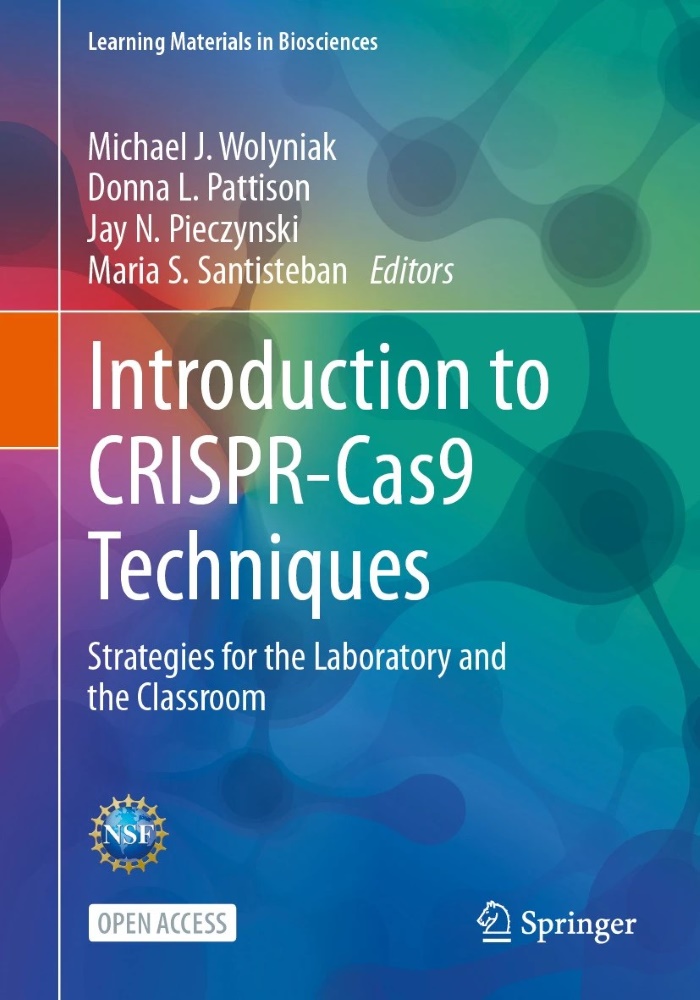 The edited volume, “Introduction to CRISPR-Cas9 Techniques: Strategies for the Laboratory and the Classroom,” offers a thorough introduction to CRISPR-Cas9 technology and its applications across various biological model systems and is aimed at undergraduates and advanced high school classes. As this revolutionary discovery has become a fundamental tool in molecular biology over the past decade, it is essential for students to understand its core principles and learn to use it both effectively and ethically in research.
The edited volume, “Introduction to CRISPR-Cas9 Techniques: Strategies for the Laboratory and the Classroom,” offers a thorough introduction to CRISPR-Cas9 technology and its applications across various biological model systems and is aimed at undergraduates and advanced high school classes. As this revolutionary discovery has become a fundamental tool in molecular biology over the past decade, it is essential for students to understand its core principles and learn to use it both effectively and ethically in research.
CRISPR, which stands for Clustered Regularly Interspaced Short Palindromic Repeats, describes the unique DNA sequences that lie within other continuously repeating DNA sequences in bacterial genomes. Cas9 is an enzyme that acts as molecular scissors which cut the DNA at a specific location as guided by the RNA. CRISPR-Cas9 technology has revolutionized biomedical research by precisely cutting DNA and then allowing the natural DNA repair process to take over.
“One of the more challenging aspects of our work is staying up to date with the rapid advancements in our fields,” Wolyniak says. “For me, CRISPR gene editing is arguably the most significant breakthrough of the past generation. It is crucial that we teach our students not only how to use this technology but also how to make informed ethical decisions about its application in society.”
This book project grew out of Wolyniak’s NSF-supported efforts to establish a network of undergraduate instructors dedicated to developing innovative approaches for teaching CRISPR gene editing in both classroom and laboratory settings. Thanks to additional NSF funding, the volume is available as an open-source publication, free to download.
“I have used CRISPR as part of the lab work in our genetics and cell biology, as well as molecular and cellular biology, classes,” Wolyniak says. “In these classes, students are challenged to propose gene mutations in yeast that could potentially alter how the cells function. Work like this exposes students to CRISPR while also giving them the opportunity to design, implement, and troubleshoot experiments.
“In addition, publishing work like this allows us to contribute to the scientific community in perhaps the most important way: training future scientists who will use emerging technologies like CRISPR to advance science and address complex medical and biological challenges in society.”
As biology and technology continue to evolve, it is essential for our faculty and students to be actively engaged in the learning process. Through their dedication and involvement, our faculty and students will continue to push the boundaries of discovery and serve as leaders in and outside of the classroom.
Read more about this edited volume: Introduction to CRISPR-Cas9 Techniques: Strategies for the Laboratory and the Classroom